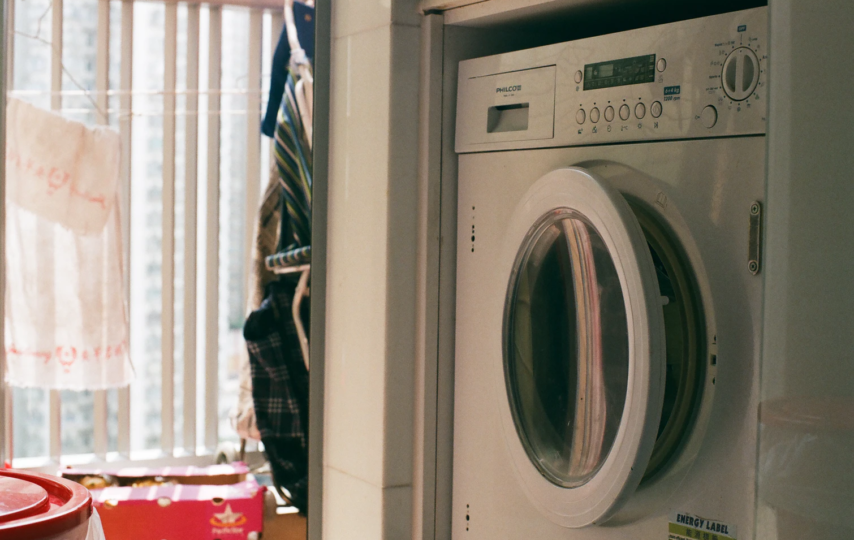Although laundry is something we have to do almost every day, we sometimes encounter unpleasant odor or visible stains after wash. These less than perfect results keep us wondering what went wrong– is it because of the laundry detergent? Water temperature? And the list of reasons goes on.
Well, do not be discouraged by these inevitable instances. They are normal. But, you could prevent these things from happening again. There might be some laundry tricks you do not know yet. Here are ten new laundry tips you wish you’d known sooner:
- Sort the Clothes
Sorting dirty laundry before washing them will prevent from damaging their fabric and bleeding colors. There are certain things you need to do when sorting the laundry:
- Remove buttons, buckles, and pins.
- Unzip zippers
- Secure velcro, close hooks, and snaps to prevent possible abrasion and snag.
- Check pockets for essential things that might be destroyed, or that could destroy the fabric.
Separate them by color and soil level. Separating clothes by color will prevent unwanted color bleeding. Meanwhile, laundry that is stained or has visible dirt should be washed separately. Soiled laundry needs to have enough friction to get rid of the heavy dirt.
You can also sort your dirty clothes by odor– this may be a new laundry tip for you. But it is quite helpful to separate clothes with a more pungent smell. It prevents the odor from transferring into your work clothes.
- Clean Washing Machine
Always clean the washing machine before using it. There may be soap and mineral residues from past usage. Some detergents build up around the seams of the washing machine. These residues might cause odor and transfer to your clothes.
Fill the washing machine with water and add a quart of white vinegar or bleach. Let the washing machine run a full cycle and drain it. Fill it again with water. This time, do not add any vinegar or bleach. Run an entire cycle and drain it.
- Update Laundry Detergent
Sometimes, it is our reflex to grab a bottle of laundry detergent immediately without checking its ingredients. The next time you go to the groceries, I suggest choosing a detergent that does not use harsh ingredients.
Powdered laundry detergent is suitable for general loads, and they are usually cheaper. But, it has difficulty dissolving in cold water. There’s a greater chance that powdered detergent will leave white residues on the clothes.
Meanwhile, liquid laundry detergents have enzymes included in its ingredients, which is quite helpful for pre-treating stains. Read the full list of ingredients in the liquid detergent carefully to ensure it has the cleaning power you need. Although liquid detergent is convenient and easy to use, do not be complacent as you may overdose the load with detergent.
- Do Not Delay Stain Pre-treatment
One of the bad habits in dealing with stains is delaying its removal. When a stain occurs, you have to remove it as soon as you notice it quickly. You can soak the garment with cold water, use a stain remover, or try other kitchen ingredients that may help you remove stains.
After you have managed the stains, you can wash it in the washing machine and inspect it afterward whether the stain is still available. If it is, then repeat the actions until it is not visible.
- Go Easy on Fabric Softeners
One of the common mistakes in the laundry is using too much fabric softener and laundry detergent. Overdosing these two will create damage to the fabric. It will cause too many suds that will trap the soil and redeposit on the seams of the cloth. Using less or half of the recommended amount will give you a pleasing result.
- Right Water Temperature
You might not be aware of this but the water temperature can affect the condition of the fabric. Cold water is recommended for clothes with delicate fabric and dark-colored clothes. Meanwhile, warm water is best for moderately soiled clothes, and hot water should be for heavy fabrics like towels, beddings, and heavily stained clothes.
- Use Kitchen Products: The Big Four
You have several ways to tackle your laundry in a green alternative. You can use kitchen products to effectively clean your clothes without harming the environment. Baking soda helps remove the pungent smell on clothes. It can also boost the whitening ability of the bleach.
For stain removers, you could use salt, lemon, and vinegar. These are effective stain removals when the stain is still fresh. More so, salt can restore and maintain the freshness of the cloth.
However, do not apply these four kitchen products when the fabric is labeled as dry clean only.
- Avoid Clothes Shrinking and Stretching
Reading the care label of your clothes helps you prevent shrinking and stretching them. You would know if it is for washing, dry cleaning, what type of laundry cycle recommendation, or water temperature to use.
Washing with cold water does not help prevent shrinking, but it is less damaging to the fabric than using hot water. Also, hand washing and gentle cycles cause less damage than those with higher rotation cycles and more prolonged friction rub.
Moreover, the most gentle way to dry the clothes and prevent shrinkage is to air dry. Excessive heat from dryers may cause damage to fabrics.
- Air-dry Clothes
Drying clothes with natural air or sunlight to prevent them from wearing off quickly. If you do not have an open space, you can use collapsible clothes drying rack in your apartment space. But, if your option is to dry clothes using a dryer, set it to cool or air fluff setting to prevent shrinkage.
- Green Laundry Habits: Conserve Water and Energy
Washing and drying machines consume a significant amount of water and energy. With that, I will share a new green laundry tip with you to maximize the resources with each load of laundry you do.
Wash one full load or wait until your laundry equates to a full load, rather than washing two small loads. But, ensure that you will not overload your washer. Your clothes need to mover freely to get clean.
If you can, use warm water to wash the laundry and cold water to rinse the load. Cold water is efficient in rinsing the soap.













